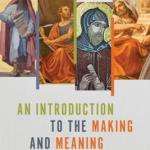In an essay on radical Augustinian social critique in his Religion, Truth, and Social Transformation, Lambert Zuidervaart summarizes the social vision of Herman Dooyeweerd with two themes: spiritual antithesis and structural differentiation. The antithesis is, for Dooyeweerd, “universal, comprehensive, and deeply spiritual,” running “right through the Christian life itself.” History is a life-and-death struggle between antithetical “ground motives,” ultimately a struggle between “a spiritual orientation for which life, culture, and society are God’s redeemed and redeemable creation, and one for which God’s creative and redemptive work are irrelevant or nonexistent” (224-5).
Dooyeweerd accepts Kuyper’s view of sphere sovereignty, and elevates it into a “creation-wide principle” through his theory of modal aspects. Thus, Dooyeweerd “endorses the differentiation of institutions in the modern West but resists the secular spirit that helps drive this process.” He opposes totalitarianism and premodern ecclesial dominance of society, but because of his opposition to secularism he stands against mainstream liberalism (225). For him, “modern structural differentiations among, say, the church, the state, the economy, and civil society are historical achievements worth preserving and advancing” but he thinks they ought to be advanced by a process “imbued with a holy spirit” (226).
In the Epilogue to his collection of essays, Zuidervaart links this problem to Dooyeweerd’s failure to reckon with the reality of “societal evil” alongside natural and moral evil. Dooyeweerd didn’t “plumb the depths of societal evil in the West because he gave normative priority to structural differentiation in society. He turned the idea of sphere sovereignty . . . into a creational principle that lies beyond critique. Hence Dooyeweerd could not seriously ask whether the Western differentiation of social institutions, such as government, corporations, and universities, might itself embody and foster societal evil.” As long as differentiation functions as “a structural hypernorm,” it is impossible to “assess the environmental, cultural, and interpersonal costs of this process” (320-1).
Zuidervaart spies a tension here: “The apparent dominance of a secular spirit since the eighteenth-century Enlightenment raises the question of whether the modern Western differentiation might be more deeply misdirected than Dooyeweerd recognizes. At the same time, the apparent legitimacy of modern Western differentiation raises the question of whether spiritual redirection is as crucial to societal well-being as he insists” (226). Perhaps, in other words, modern differentiation reflects a ground motive antithetical to Christianity’s; and, if differentiation is all to the good, would it be a good thing for the spiritual “sphere” to direct the whole of society, as Dooyeweerd seems to want.
Dooyeweerd’s disciples tend to follow one or the other directions of this unresolved tension: “Those who are distressed as the spiritual malaise of the West tend to become reactionaries who see little of worth in contemporary society”; they stress the antithesis. “Others who are enthusiastic about modern differentiation end up white-washing the evil that besets Western societies and that these societies inflict on others” (226).















